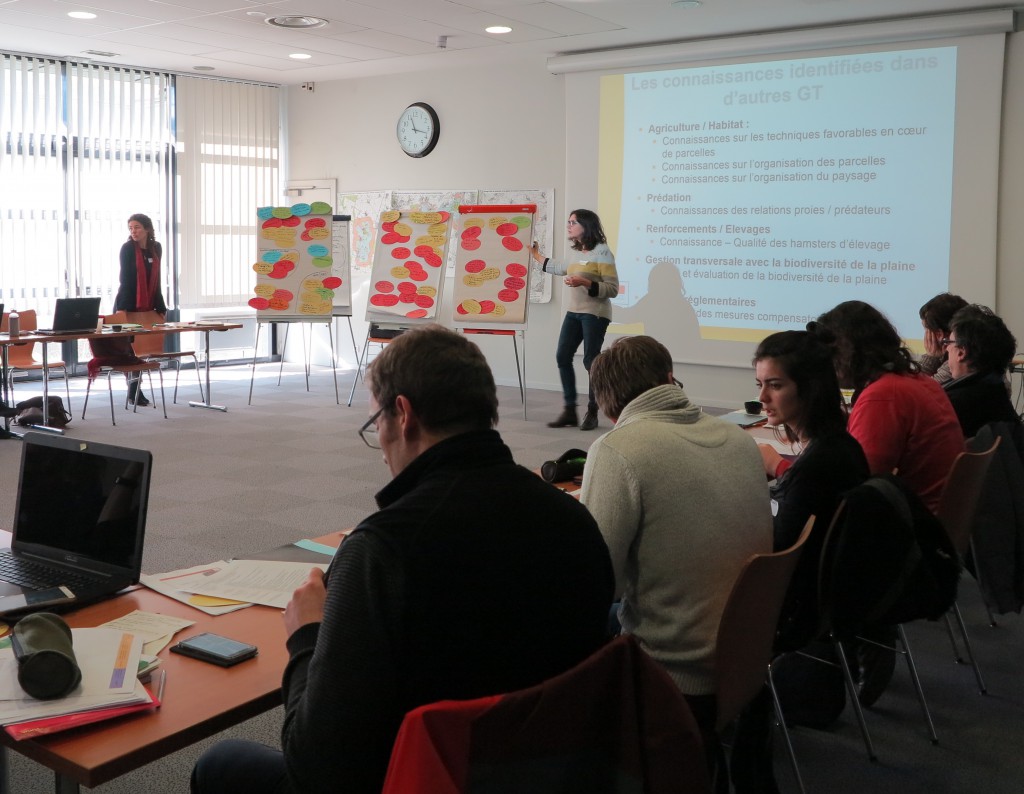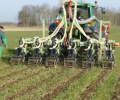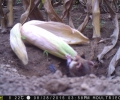A new NPA in favour of the European Hamster is being drawn up
26 mars 2018In association with the various players involved in protecting the European Hamster, a fourth National Plan of Action (NPA) in favour of the species is being drawn up by DREAL (Regional Department for the Environment, Planning and Accommodation) Grand Est, the coordinating body.
The results obtained within the scope of the LIFE ALISTER project are being used during the discussions in drawing up this future plan in favour of the hamsters!
What is an NPA?
The general aim of national plans of action s is to ensure the most threatened species are maintained at or restored to a favourable conservation status. NPAs are a mobilising tool for the different players involved (institutional, academic, socio-economic and associative bodies) that set out a strategy over a period of 5 or 10 years.
The LIFE ALISTER project: an innovative project to complement the NPA
The LIFE ALISTER project began as the last NPA was being drawn up (2012-2016) and some of the actions mentioned in the NPA inspired those of LIFE. These basic measures in the NPA aimed to restore the hamster to a good conservation status.As for LIFE ALISTER, the project is able to wholly finance the most innovative actions of the NPA;, lthose that aim, in the long term, to maintain the hamster in a good conservation status in Alsace by implementing more sustainable solutions that are less dependent on public funding. In fact, the objectives of the LIFE ALISTER project are to test, evaluate and validate the methods that result in improving the conservation status of the European Hamster within the context of what is essentially an experimental study whilst aiming to improve the balance between economic and ecological interests. .
A new NPA for the European Hamster and grassland biodiversity in 2018-2022
Le PNA 2012-2016 has ended, DREAL Grand Est led an evaluation phase of the plan in 2017 to understand the results, ascertain if the objectives had been reached and lay down foundations for carrying out further actions in favour of the species. The results of this evaluation highlighted the need for another NPA in 2018-2022 to improve the conservation status of the species and grassland biodiversity.
All the players in the LIFE ALISTER project are taking part in topic-based work groups organised by DREAL Grand Est, since they constitute all the major players in protecting the species. In addition, lthe results obtained within the scope of the LIFE ALISTER project feed into these group discussions.The link between the end of the LIFE ALISTER programme (on 31 March 2019) and the future 2018-2022 NPA is a real challenge, as measures to improve the knowledge, awareness and protection of populations must be continued in the future NPA. The dynamics initiated among the players during the previous NPA and LIFE ALISTER will serve to ensure consistency in the actions whilst winding down the LIFE ALISTER project.
The various validation phases of the new NPA are planned for the end of the second quarter of 2018..




